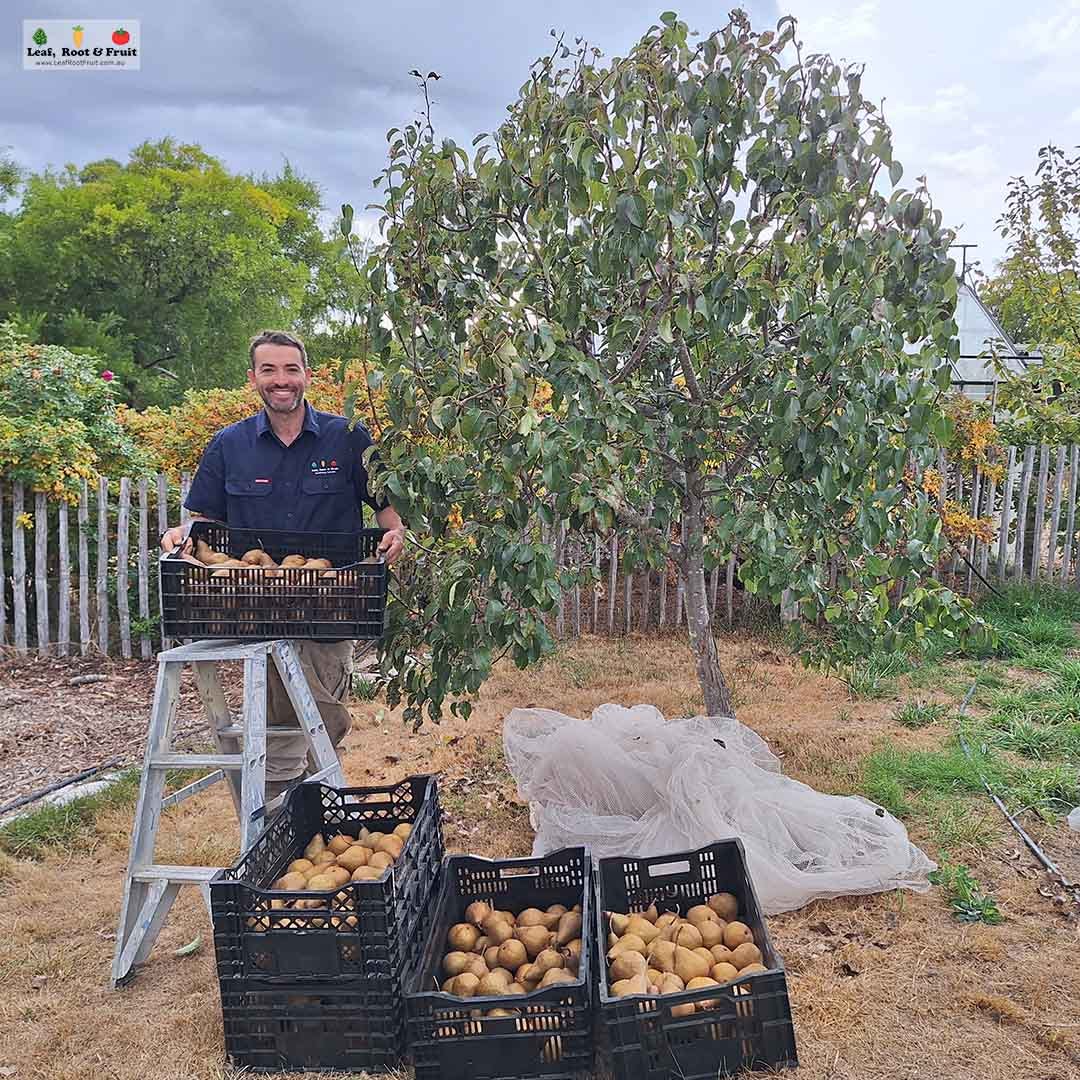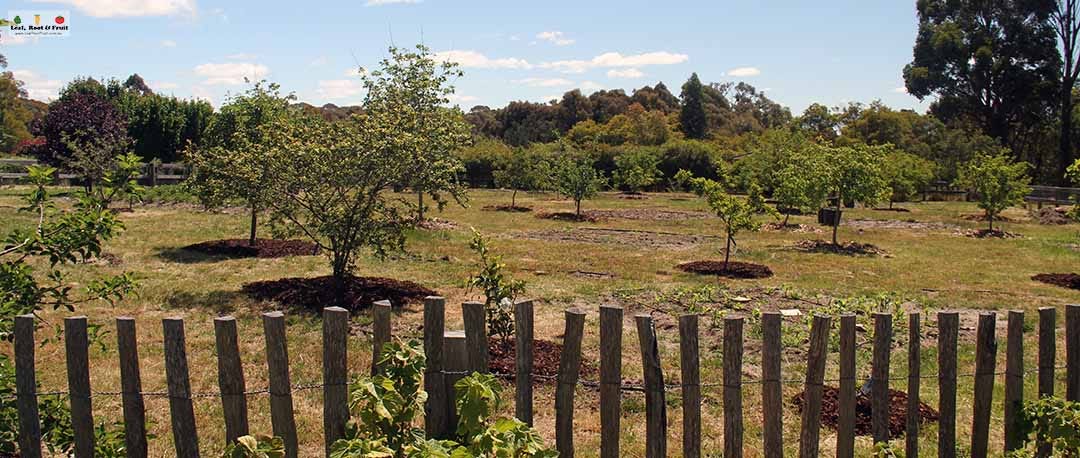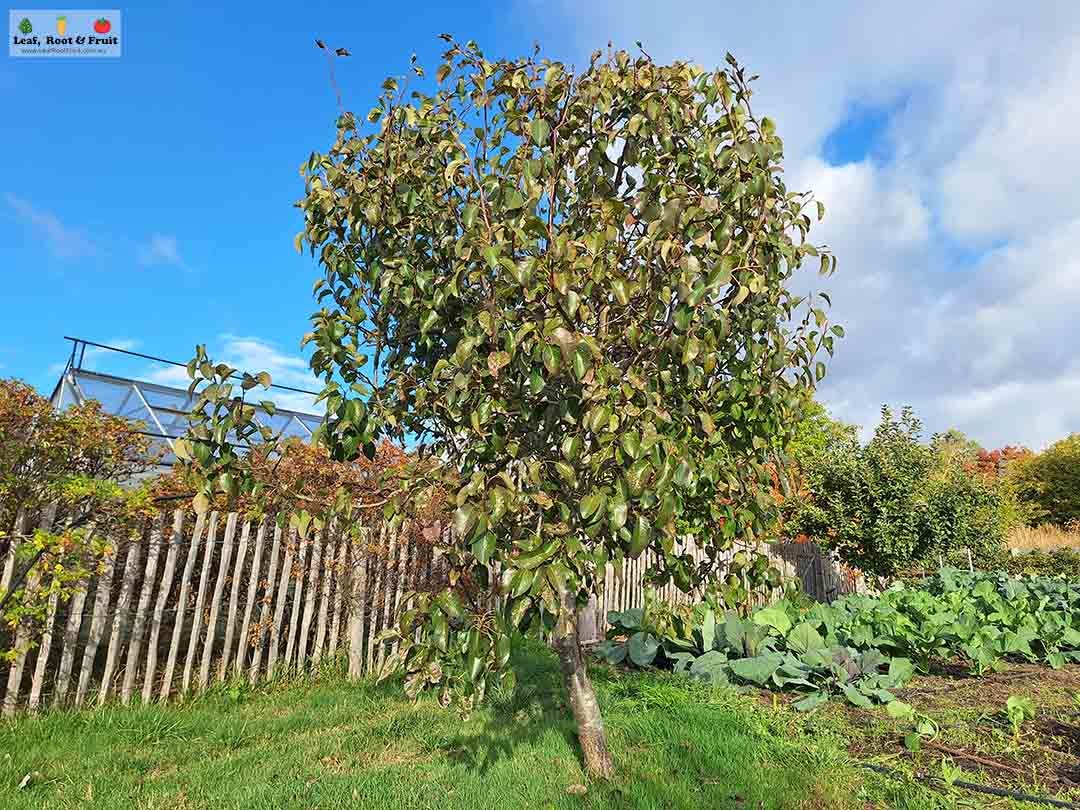How to Keep Large Fruit Trees Small
A guide to taming those rampant fruit tree monsters in your backyard
Five years ago, when we moved to our property in Kyneton, we inherited a sparse orchard planted by the previous owners. Most of the fruit trees were around five or six years old, but they were all relatively small for their age.
Of the 35 trees in the orchard, three were pears: a Williams, a Doyenne du Comice and a Beurre Bosc. All three pears were grafted onto what I would consider the wrong rootstock for backyard growers.

Generally, when pears are grafted onto D6 calleryana they grow into monster sized trees, sometimes over 15 metres tall.
Yet the pear trees in my orchard have remained very small. They each measure around 3 metres tall and 2 metres wide, even on these vigorous rootstocks.
For most households, there are many reasons to prefer small fruit trees over rampant monsters. Small fruit trees are easier to prune, easier to net, easier to spray (if you use Bordeaux spray, for example) and easier to pick fruit from. So I’m not concerned that my pear trees have remained very small – in fact I’m relieved!
“What’s your secret?” I hear you ask
If you’re reading this post, then chances are you have a monster in your garden, a fruit tree on a vigorous rootstock that’s taken off. You’d need a ladder to pick the fruit, if you could beat the birds, that is. But the tree has become too big to net, so the birds get the lot.
Each year you probably take to it with the secateurs in an attempt to restrain it, and each year it responds with even more vigour, reaching for the sky and taking over the entire garden.
If only there was a magic wand that you could wave to keep the tree small and productive.
Exhibit A: My Beurre Bosc pear tree
Nothing gets a point across like a productive pear tree and there’s no finer example of one than my Beurre Bosc pear. As mentioned, it’s on a vigorous rootstock, and at around 10 years of age it should be around four or five times the size it is.
The secret lies in how it’s being treated.
Our native soil is granitic sand with a pH of 5.5. It’s devoid of nearly every mineral that plants need to thrive. When I conducted a soil test, the results showed that the only mineral we have in excess is iron. This is “hungry country”.
Despite the lack of soil nutrients, I don’t fertilise my deciduous fruit trees (citrus and avocados are a different story). I don’t even top-dress my deciduous fruit trees with compost. Not once in five years have they been fed.
We have more rainfall here in Kyneton than many areas of Melbourne. However, unlike Melbourne, Kyneton gets most of its rainfall in winter. Summer is usually very dry compared to Melbourne and usually a few degrees hotter each day. It can be a brutal place for a tree to grow.
However, I rarely water my fruit trees. This particular Beurre Bosc tree has been watered a miserly five times since we moved here.
Not fives times per summer. Just five times in total.
Each watering was a thorough and deep soaking, but I watered only frequently enough to keep a drought-stressed tree alive. Even with our very dry February and March, the tree didn’t receive a single drop of water from me this summer.
In terms of pruning, this tree has received very little. I can remember only twice giving it the lightest of haircuts. I trimmed off only the odd watershoot to help get the netting over it in early December.
To sum up, my Beurre Bosc pear tree is neglected:
It hasn’t been fertilised and grows in poor soil
It is hardly ever watered
It receives only an occasional light prune.
It is this neglect that keeps the tree small. If I watered it more, and if I increased the availability of soil nutrients and pruned it harder, it would explode in size.
“Don’t you need to feed and water your tree to get it to fruit?”
This may be the case for, say, citrus. But for my Beurre Bosc, the proof of the pudding is in the eating. This year, I picked 91kg of fruit from the tree.
Ninety-one kilograms of fruit and other than netting it I did NOTHING!

You can fertilise your fruit trees, water them well and get them thriving. They’ll produce even more fruit for you than mine does. However, they’ll also grow into monsters. You can’t net monsters, which means the birds will get the lot anyway.
So give your trees a dose of neglect and save all that compost and water for your vegetables. Your fruit trees will thank you for it with a huge crop and far fewer pruning requirements.
Just keep in mind that if the tree has been pampered for years, then the sudden switch to neglect may stress it more than you had intended. Consider weaning it off the unnecessary life support over the next few years.
“Too late,” you say, “The horse has bolted!”
Yes, it’s difficult (if not impossible) to restrain a rampant tree.
Yes, rootstock selection is crucial to a successful backyard orchard.
Yes, it’s going to be a challenge.
But all is not lost.
There is still hope for your monster fruit tree.
Here are a few different strategies for you to consider using to reduce the size of your backyard tree and keep it productive.



